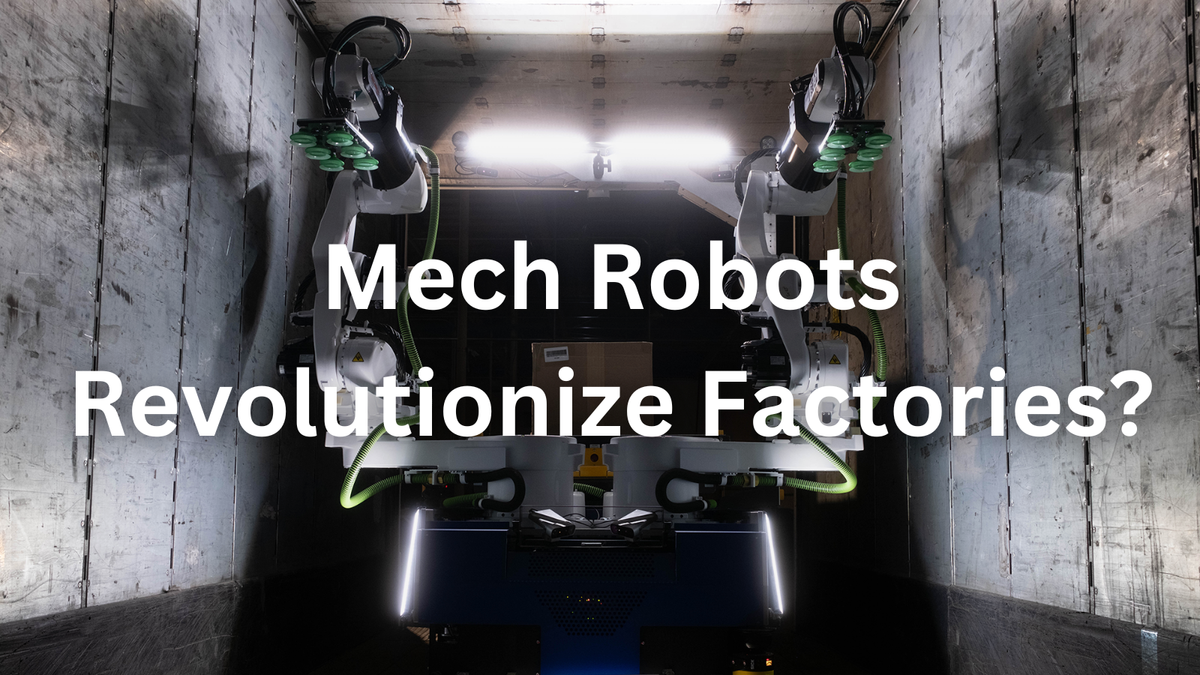Will Mech Robots Revolutionize Factories—Or Replace Human Workers?

🏭 The Factory Floor Dilemma: Repetition, Risk, and Rising Costs
Manufacturing and logistics have long grappled with a critical challenge: how to handle repetitive, physically demanding tasks without sacrificing worker safety or efficiency. Enter Mech—the world's first AI-powered industrial super-humanoid robot that promises to rewrite the rules. Developed by California-based Dexterity, this 17-foot mechanical marvel can lift 132 pounds, work in extreme temperatures, and learn new skills overnight. But will it empower workers or make them obsolete? Let's dive in.
🤖 Meet Mech: The Superhuman Factory Partner
Dexterity's breakthrough isn't just another assembly-line bot. Mech combines human-like adaptability with machine precision through three revolutionary features:
- ✅ Physical AI Dominance: 16 cameras and hundreds of AI models enable real-time decision-making—like instantly adjusting grip strength for fragile items
- ✅ Extreme Environment Mastery: Operates in -0°F to 122°F ranges (perfect for freezer warehouses or foundries)
- ✅ Scalable Strength: 132-pound lifting capacity with millimeter precision, reaching 8-foot heights effortlessly
- ✅ 10x Productivity Boost: One worker can supervise 10 Mechs simultaneously, slashing injury risks from heavy lifting

🚀 The Logistics Game-Changer: From Warehouses to Loading Docks
Mech isn't just strong—it's smart. Its "superhumanoid" design tackles four critical operations:
- 📦 Palletizing/Depalletizing: Stack 130-pound boxes at 60+ units/hour with perfect balance
- 🚚 Truck Loading: Optimize space usage 30% better than human crews using AI spatial mapping
- 📦 Order Picking: 99.9% accuracy rate via object recognition (vs. human 95% average)
- 🔄 Future-Proof Skills: Software updates teach new tasks like quality inspection or machine maintenance
⚠️ The Human Factor: Enhancement vs. Replacement
While Mech's specs dazzle, real-world adoption faces three hurdles:
- 🚧 Job Security Fears: Can factories retrain workers as "robot supervisors" fast enough?
- 🚧 Technical Limits: 16-camera systems struggle in low-light environments (common in older warehouses)
- 🚧 Public Perception: 67% of manufacturing workers in a 2024 Pew survey feared automation would reduce jobs
🔮 The Future of Work: Collaboration, Not Competition?
Dexterity's vision hinges on Mech being a tool, not a replacement. Key indicators suggest:
- 📈 Success If: Factories use Mech for dangerous tasks (chemical handling, extreme heights)
- 📉 Failure Risk: Companies prioritize cost-cutting over worker retraining programs
- 🚀 Wild Card: Union negotiations could shape Mech's role—will operators demand "robot oversight" clauses?
As Mech rolls out to early adopters in 2026, one question looms: Will this superhumanoid create a new era of human-machine teamwork—or become the factory worker's obsolescence? The answer may define the next decade of manufacturing.
What's your take? Could you work alongside a 17-foot robot colleague, or does Mech spell trouble for blue-collar jobs? Let's discuss.
Let us know on X (Former Twitter)
Sources: Kurt Knutsson. World’s first AI-powered industrial super-humanoid robot, April 6, 2025. https://www.foxnews.com/tech/worlds-first-ai-powered-industrial-super-humanoid-robot










